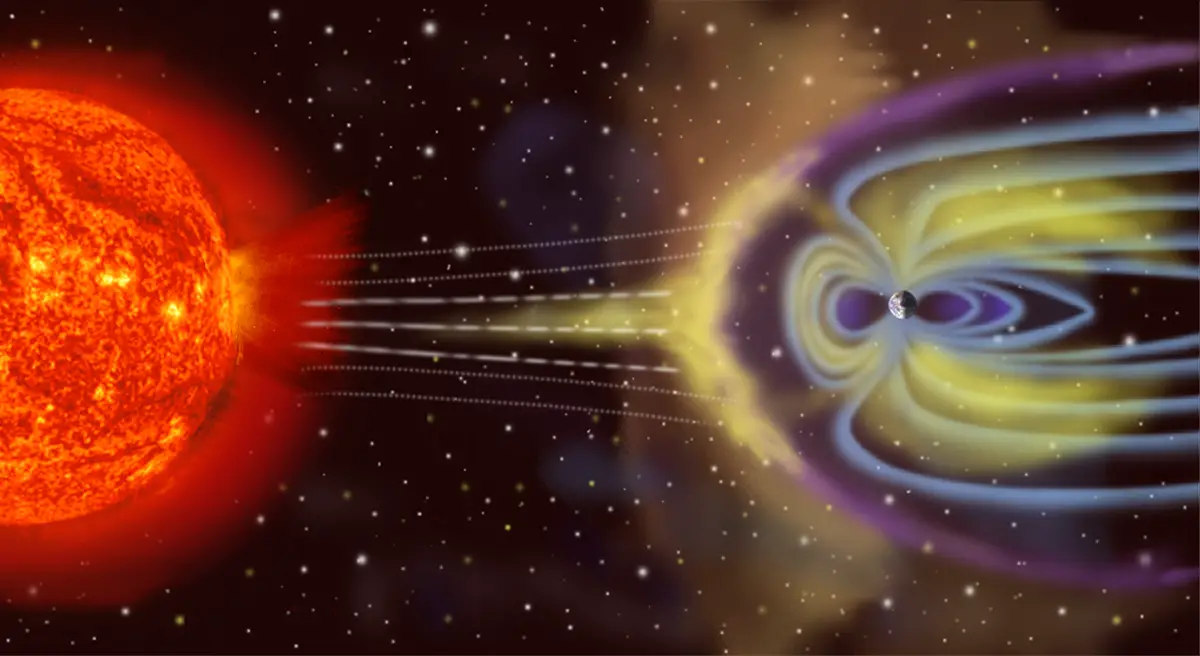 has been exactly 100 years since the last Geomagnetic storm and one takes place every century. Isn’t it interesting how so many catastrophic events take place every century? Geomagnetic storms or Solar storms as some people like to refer to them as are categorized into two groups. The recurrent storms take place every 27 days (once a month) as they are corresponding with the Sun’s rotation.
has been exactly 100 years since the last Geomagnetic storm and one takes place every century. Isn’t it interesting how so many catastrophic events take place every century? Geomagnetic storms or Solar storms as some people like to refer to them as are categorized into two groups. The recurrent storms take place every 27 days (once a month) as they are corresponding with the Sun’s rotation.
The second group is the non-recurrent storms that we also refer to as superstorms. These storms do not have a very specific time of occurrence, we only know that they occur every century. The last non-recurrent storm took place in May 1921. The second last non-recurrent storm took place in September 1859.
What is a Geomagnetic Storm?
For those who may not know, a Geomagnetic storm is a disturbance of the Earth’s magnetic field that is caused by a shockwave produced by the sun. These shockwaves occur on a monthly basis, but every century there is a huge solar storm that sends a big solar wind that affects our magnetic field. Earth’s magnetosphere (magnetic field) is what separates Earth’s atmosphere from the rest of Space.

There is also another difference between the two categories. Recurrent storms are produced due to solar flares, whereas non-recurrent storms are produced by CME (Coronal Mass Ejections) are a collection of charged particles are huge bubbles of coronal plasma threaded with intense magnetic field lines that are ejected from the Sun over several hours. The video below presents a solar flare recorded by NASA in 2016.
Our magnetic field is strong enough to block shockwaves that are created by recurrent storms, but not strong enough to stop those created by non-recurrent storms. Most common people that are not experts in the field or simply don’t find space that interesting are not aware of how compelling the next Geomagnetic superstorm can be and this is simply based on what happened with the previous two.
History will repeat itself
Almost everyone had forgotten about it until it was brought up at this year’s SIGCOMM 2021 conference. Most people at the conference didn’t give much attention to the issue as they looked at it as a possibility, but we know for sure based on historical phenomenons that this will occur once again this century (most likely in the next 30 years).
1859
The Geomagnetic superstorm that took place in 1859, also called Carrington storm, is recorded as the biggest geomagnetic superstorm in history. By 1859 the Telegraph Network within Europe was very well connected, having lines in almost every country. The telegraph networks were designed for the transmission of telegrams from state enterprises, institutions, and private individuals, for the teletypewriter exchange.

To put it in simpler terms, it was the way people communicated through technology within the 19th century. At the time this was the most predominant piece of technology around the world and all the countries with booming economies had a good network. The United States also had a good network.
The signal was given on August the 29th, 1859 when the signal was so bad that no communication was possible from one capital to another. Some operators around the world decided to increase the volume of electricity within their local networks in order to improve the signal, but this only lead to many of the telegraph networks burning in flames.

By September the first when experts monitoring Earth’s magnetic field observed that a geomagnetic superstorm is occurring, it was too late. Some countries such as South Africa decided to shut down their network in order to save it, but most networks within the United States and Europe were destroyed.
This didn’t just damage the network system, but also the economy. A lot of financial information from around the world that was driving the stock market at the time was transmitted using telegraphs. As no connections were made from the 29th of August until the 3rd of September, the market crashed. It took many years for the world to recover from that event, building back the economy and rebuilding the telegraph networks. Meanwhile, people had to revert back to mail in order to communicate.
1921
In 1921 things were not as bad because the storm was a lot smaller and since 1859, a lot more observation outposts have been built around the planet. Even so, in 1921 people were a lot more dependent on technology, therefore they acquired more technology.
The very Intensive activity began on the 14th of May 1921, when most telecommunication networks such as radio or telephones had been affected by the geomagnetic superstorm. Just as in the previous decade, the sky was in a ray of all the colors around the world, sort of like a cosmic rainbow representing the intensity of the storm.

Once again, the telecommunication network was affected by the storm, destroying some of the components and starting fires in countries such as Australia, Brazil, Denmark, France, Japan, New Zealand, Norway, Sweden, the United Kingdom, and the United States. Two very destructive fires were actually started due to this event. One was in Sweden and another in the United States.
What would happen today?
The events that occurred in 1859 were not as devastating as they could have been if they happened today. Just try to imagine that the internet simply shuts down for a couple of days. Let’s be honest, the internet has become part of our lives even if we like it or not. Cutting down the internet in today’s society is the biggest way to cripple our society.
I cannot even get my head around how many things would go wrong in the first two hours of having the internet shut down. This would also prove that we have become too stuck to technology, but we need technology to live and work more efficiently. Some may say why don’t we use technology to stop such an event, well this is out of our control.
Once again, in the risk that I am repeating myself, this is not a probability, this is something inevitable that will take place in this century. Look at the billions of dollars that have been invested in the network and telecommunication industry. Over 2 trillion dollars have been invested in 5G connectivity alone in the past 5 years, not even mentioning all the other private network infrastructures.
- What would happen to the stock market?
- What would happen to the crypto market?
- What would happen to hospitals utilizing data networks?
- What would happen to all the airports around the world?
- The list can go on and on.
There is so much at stake and so many economical and social implications that I can’t even think what will be the worst of them all. Something tells me, based on the strange way that life is working late, that this may come soon, just after the pandemic is completely over.
Many recent studies are warning the world of how catastrophic the next Geomagenetic superstorm will be based on how much technology we are using today, yet not many people seem to care much. A study by the insurance company Lloyds was done to measure what would be the cost of the damage done by such a storm in the United States. The total costs of damage were estimated at 2.5 trillion dollars, and that is just in the United States.
This matter is simply not taken seriously enough and people should definitely learn from the past. This is the same reason why I try to indulge more people into looking at and reading historical events, to prevent bad events like this from happening. In this case, we most probably can’t stop such an event, but we can prepare ourselves for the worst with contingency plans set in place for whenever the day may come.
Avid Writer with invaluable knowledge of Humanity!
Upcoming historian with over 30 million views online.
“You make your own life.”





